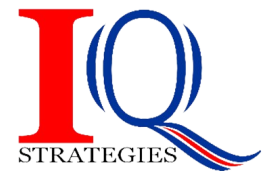
Introduction
In today’s business landscape, sustainability has evolved from a mere buzzword to a critical component of corporate strategy. As stakeholders increasingly prioritize environmental, social, and governance (ESG) factors, companies are compelled to disclose material sustainability-related information. This article aims to provide a comprehensive guidance on identifying and disclosing material sustainability topics, in accordance with Paragraph 17 of IFRS S1: General Requirements for Disclosure of Sustainability-related Financial Information.
Defining Materiality in Sustainability Reporting
Materiality is a crucial aspect of sustainability reporting, playing a central role in assessing the importance and significance of disclosed information. Like financial reporting, materiality in the context of sustainability refers to data or insights that have the potential to impact investors’ decisions concerning resource allocation and investment strategies. By identifying and disclosing material sustainability-related risks and opportunities, companies can enhance transparency and accountability in their corporate reporting practices.
Paragraph 18, of IFRS S1, emphasizes the significance of disclosing material sustainability-related risks and opportunities. This provision underscores the need for companies to provide clear and comprehensive information regarding sustainability factors that may substantially affect their operations, performance, and long-term viability. By doing so, organizations not only fulfil their reporting obligations but also enable investors to make well-informed decisions and allocate resources in a manner that aligns with their goals.
The integration of materiality in sustainability reporting ensures that companies focus on disclosing information that truly matters, rather than overwhelming stakeholders with excessive and irrelevant data. This approach promotes effective communication and enables stakeholders to gain a comprehensive understanding of a company’s sustainability performance and its potential impact on financial outcomes. Moreover, it encourages companies to prioritize and address the most significant sustainability challenges and opportunities they face, fostering responsible and sustainable business practices.
Guidance for Identifying Material Sustainability Topics
Paragraphs 54 and 55 of IFRS S1 provide valuable guidance regarding the identification and sourcing of material sustainability topics. In Paragraph 54, attention is directed towards the existing IFRS sustainability standards, which offer a framework for reporting on sustainability-related matters. However, given the current absence of comprehensive standards in certain areas, Paragraph 55 acknowledges the importance of leveraging industry-based disclosures provided by the Sustainability Accounting Standards Board (SASB).
The SASB plays a significant role as a valuable resource for companies seeking to disclose material sustainability information until additional thematic standards are issued by the International Sustainability Standards Board (ISSB). These industry-specific disclosures offered by SASB enable companies to address sector-specific sustainability issues and provide relevant and comparable information to investors and stakeholders.
By referring to the SASB disclosures, companies can enhance the quality and transparency of their sustainability reporting, facilitating better decision-making by investors. This approach promotes consistency, comparability, and reliability in sustainability reporting across industries, ultimately contributing to the overall advancement of sustainable business practices.
Understanding Entity-Specific Materiality
Despite the guidance provided by IFRS S2: Climate Related Disclosures and SASB, the determination of material sustainability topics remains inherently entity specific. While certain topics may be deemed material at a broader level, companies must conduct thorough materiality assessments to align disclosures with their unique business operations and stakeholder expectations. Materiality judgments, as emphasized in Appendix B 19 of IFRS S1, are inherently specific to each entity, negating the establishment of universal thresholds or predetermined materiality criteria.
Conclusion
In conclusion, identifying material sustainability topics involves a nuanced approach that considers both regulatory guidance and entity-specific factors. By adhering to the principles outlined in IFRS S1 and leveraging available resources such as SASB disclosures, companies can effectively navigate the complexities of sustainability reporting while ensuring transparency and accountability to stakeholders.



